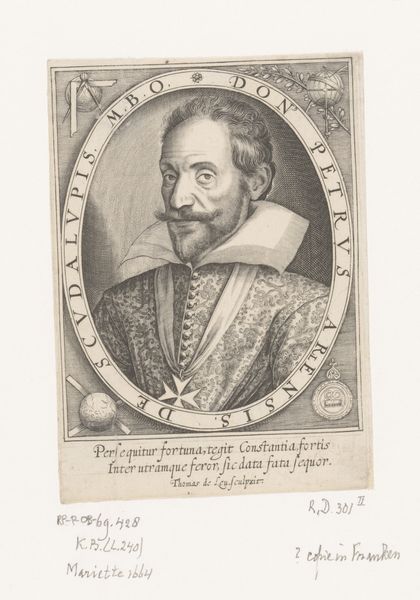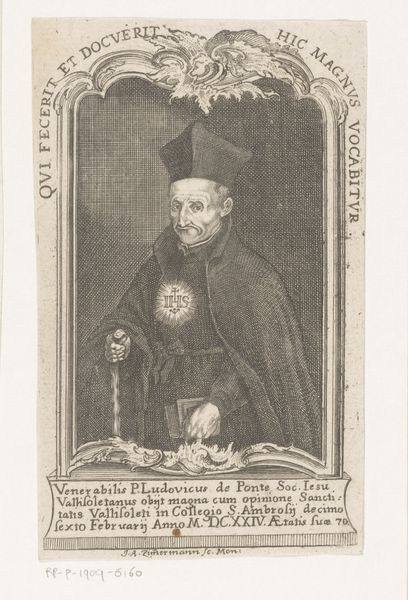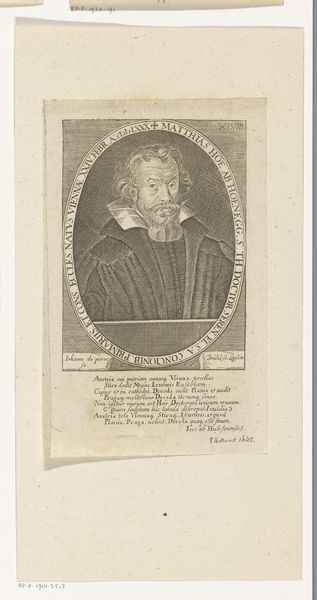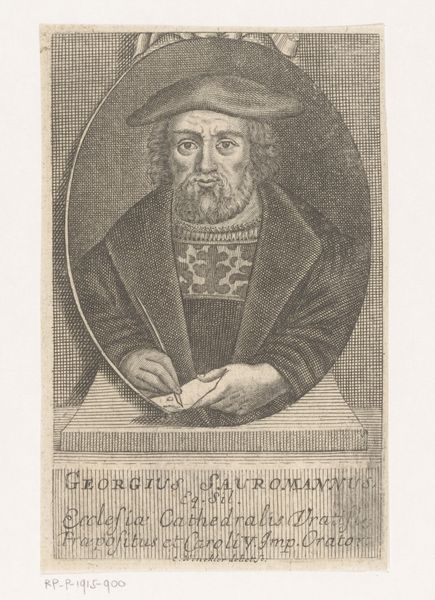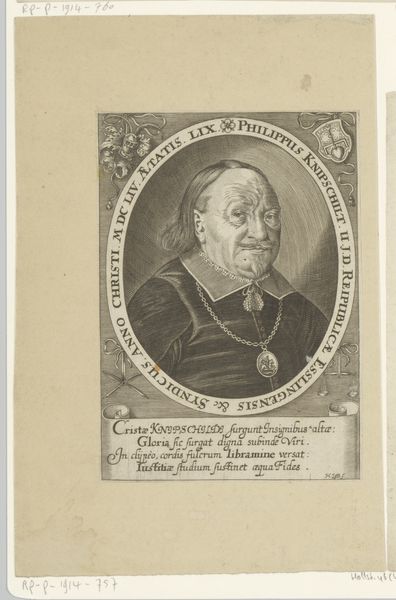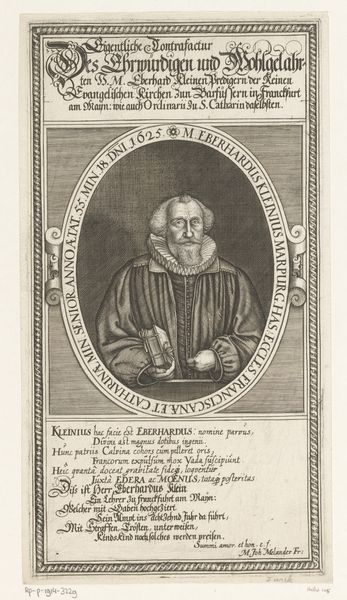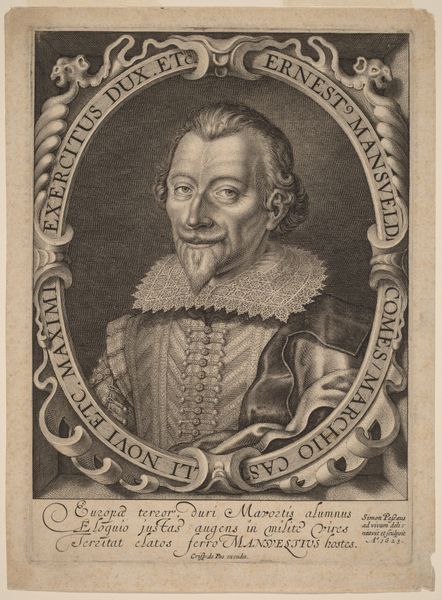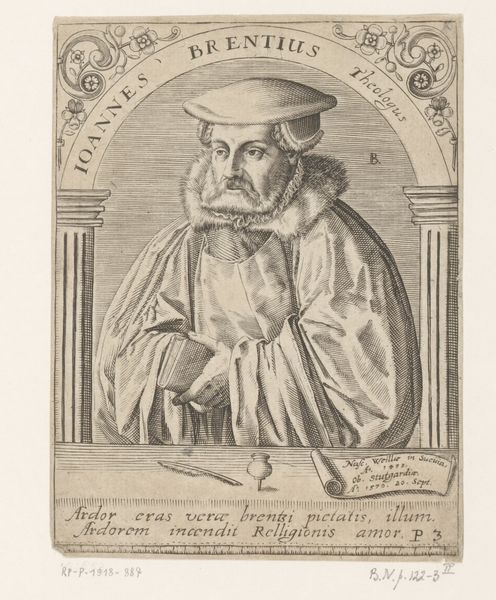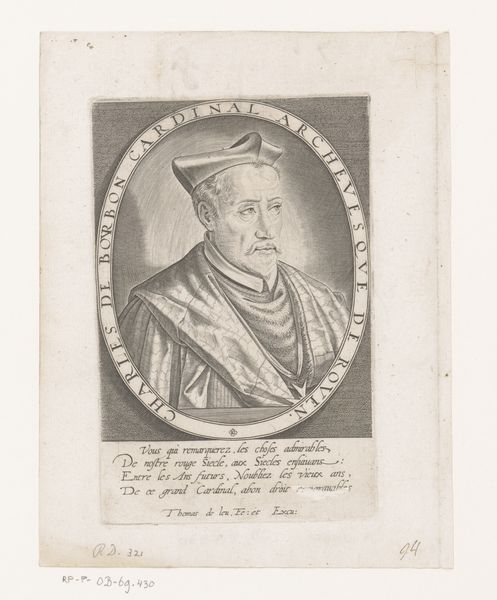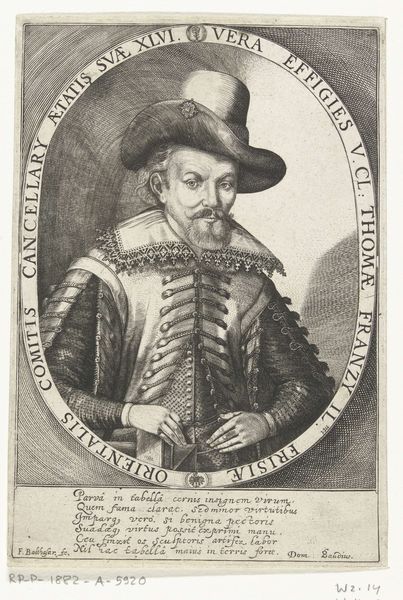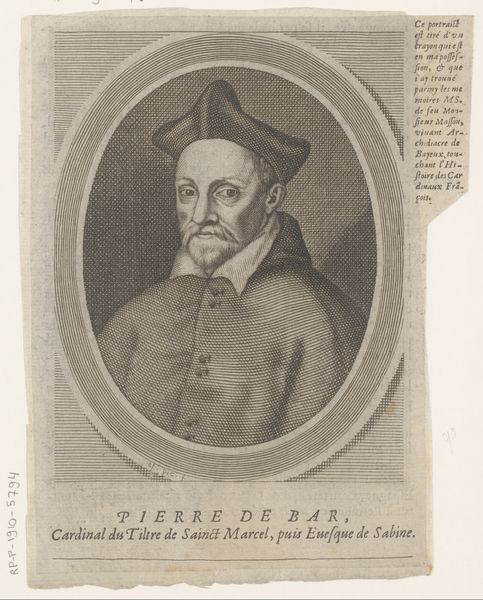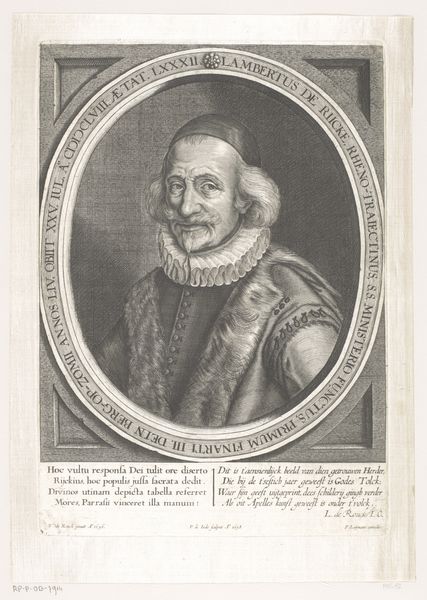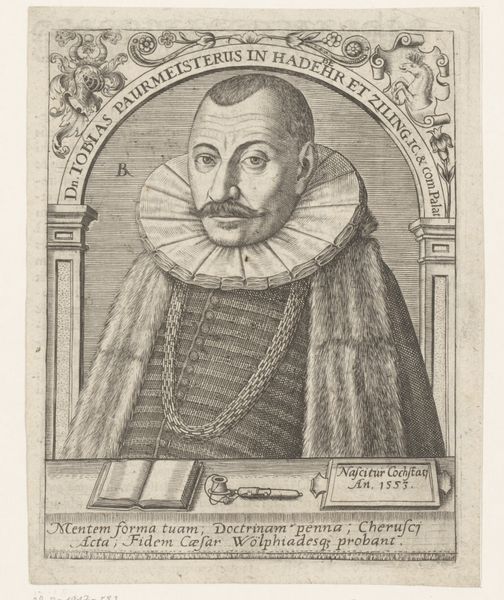
print, engraving
#
portrait
#
baroque
# print
#
old engraving style
#
engraving
Dimensions: height 164 mm, width 114 mm
Copyright: Rijks Museum: Open Domain
Curator: Welcome. Here we have a striking portrait, made as a print by Pierre de Loisy III. It's an engraving depicting the famed Peter Paul Rubens, dating roughly from 1629 to 1670. What impressions strike you first? Editor: My word, what a magnificent moustache! He looks so self-assured. There's something almost playfully mischievous about his expression. And the hat… it gives him a theatrical flair. I imagine him sweeping into a room. Curator: The attire definitely suggests a man of status, but there's something more going on here, isn’t there? Look closely at the ornamentation— the way the light catches those pearled embellishments of his doublet, alluding to wealth, prestige. There is, too, the inscription below... Editor: Oh, I missed that! "Effigie di Pietro Pavlo Rubens..." and something about Spain, France, England... My Italian isn't what it used to be, alas. It feels as though every element is intentionally constructing his image. Even the frame, that austere polygon around the subject, suggests something more monumental. Curator: You've caught onto a key point! Baroque portraiture often sought to embed the subject within a symbolic framework, presenting the sitter as more than just an individual. Rubens was no ordinary man— not just an artist but a diplomat, too, representing kings and empires, and as we read in the engraving, rewarded by Phillip IV himself! This engraving, a means to project Rubens' importance to the wider world. Editor: Right. It's not just a likeness, it’s a declaration! Perhaps something designed to secure patronage and immortalize his legend, even in reproduction. Curator: Precisely. And it brings up broader themes regarding artists of the period — they weren't always simply craftsmen. Often, as this suggests, artists like Rubens served as cultural emissaries whose fame acted as something of a soft power in its own right. Editor: Mmh, an artist as cultural weapon... Fascinating to think how potent an image like this was, carrying more weight than meets the eye. It really speaks to the enduring power of visual communication to shape perceptions and elevate legacies. Curator: Absolutely. These layers, I think, help us see Rubens in new ways.
Comments
No comments
Be the first to comment and join the conversation on the ultimate creative platform.
